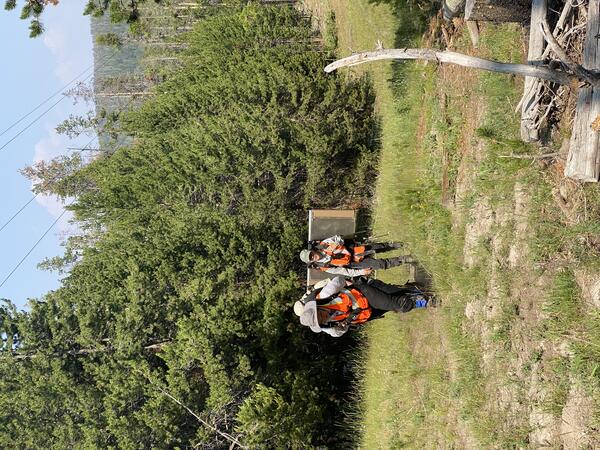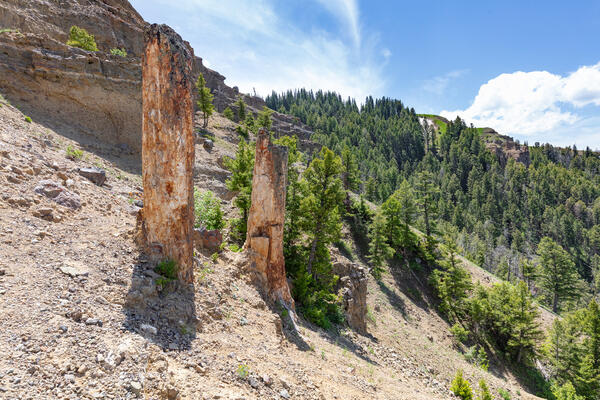USGS scientists carrying field equipment to set up a gas monitoring station in Yellowstone National Park
linkUSGS scientists Laura Dobeck and Sara Peek carrying field equipment to set up a gas monitoring station in Yellowstone National Park. USGS photo by Jennifer Lewicki, July 13, 2021.






















